The thing about books is that they can have a fascinating multitude of uses and functions. In my previous post, I’ve suggested that The First of May format contributes to the feeling of actually watching a play — which will be discussed here. All 52 panels of the book have word and image designed to work alongside one another to create a narrative.
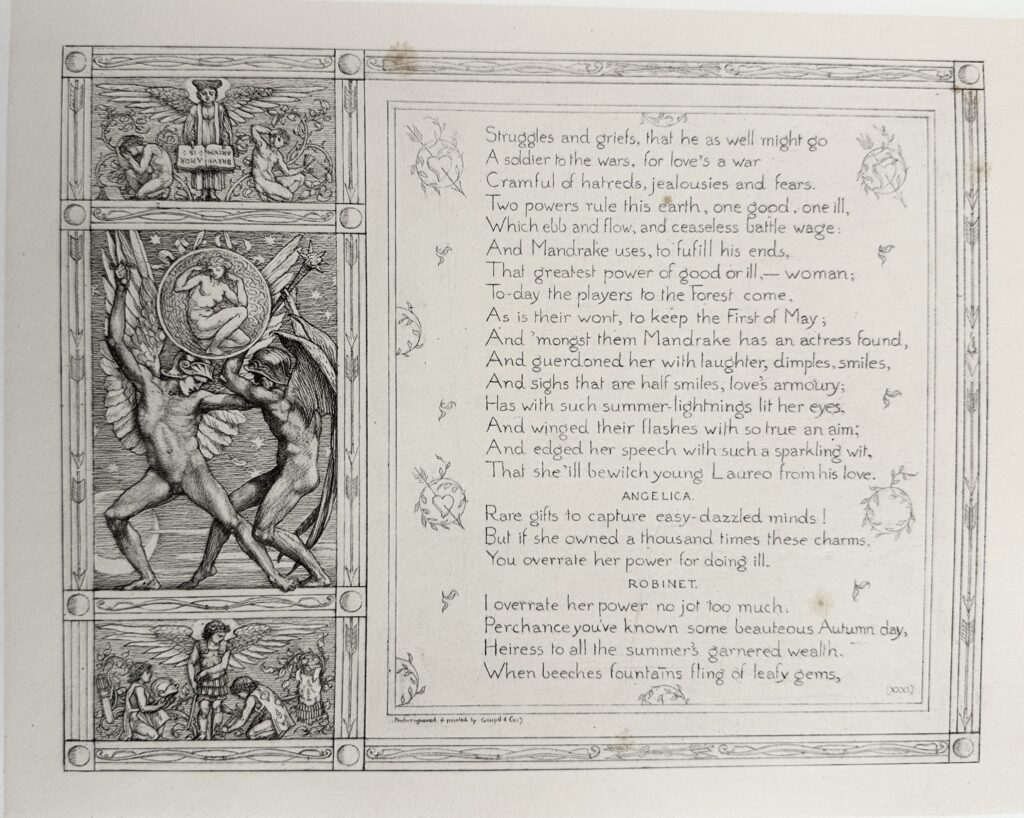
Walter Crane used his own lettering, hand-writting the entire play in decorative letters instead of using mechanical printing — making it one of the reasons the entirety of the page function as one. The natural environment portrayed in the illustrations — and the drawing lines themselves — wouldn’t work with the sameness of any other font and would probably disconnect the text from the image. The mise-en-text follows the illustration, sometimes being center aligned, sometimes in a block, or many blocks placed in a way that creates a design with the character’s lines.
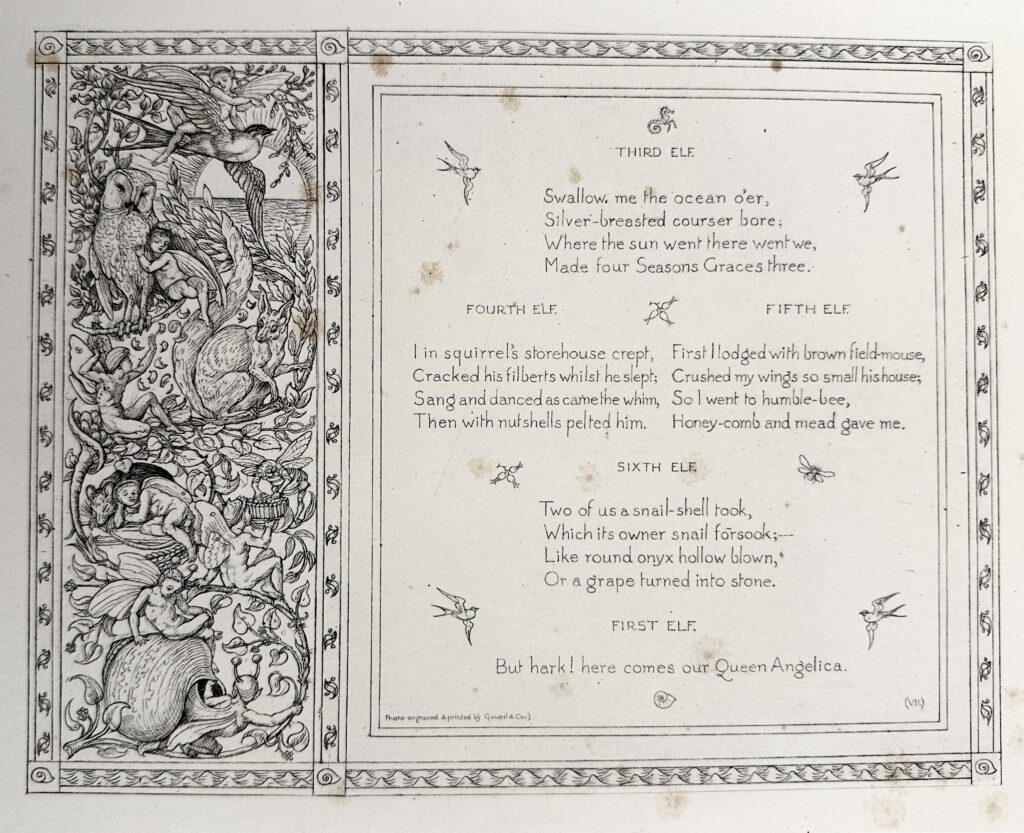
The placement of lines matches the flow of the illustration and the playfulness of the elves.
Other elements, like birds, flowers, leaves and butterflies are sprinkled around the text margins uniting even more drawing and text. The unique border motifs of each panel also have a narrative supporting role, featuring flowers, foliage, snakes, butterflies, candles and architectural elements.
John R. Wise, author of The First of May, a Fairy Masque, was a writer and a natural historian who wrote a volume on Shakespeare: his Birthplace and its Neighbourhood. The play’s theme might as well be inspired by Shakespeare’s A Midsummer Night Dream based on his knowledge and with all the fairies and the woodland scenery. The illustrated editions of A Midsummer Night Dream also from around the end of the 1800s don’t have the same “theater” format as The First of May, looking more like an illuminated medieval manuscript. Of course, the illustrations of those editions were designed to be true to Shakespeare’s time. However if The First of May was inspired by A Midsummer Night Dream it’s interesting to compare their illustrations.
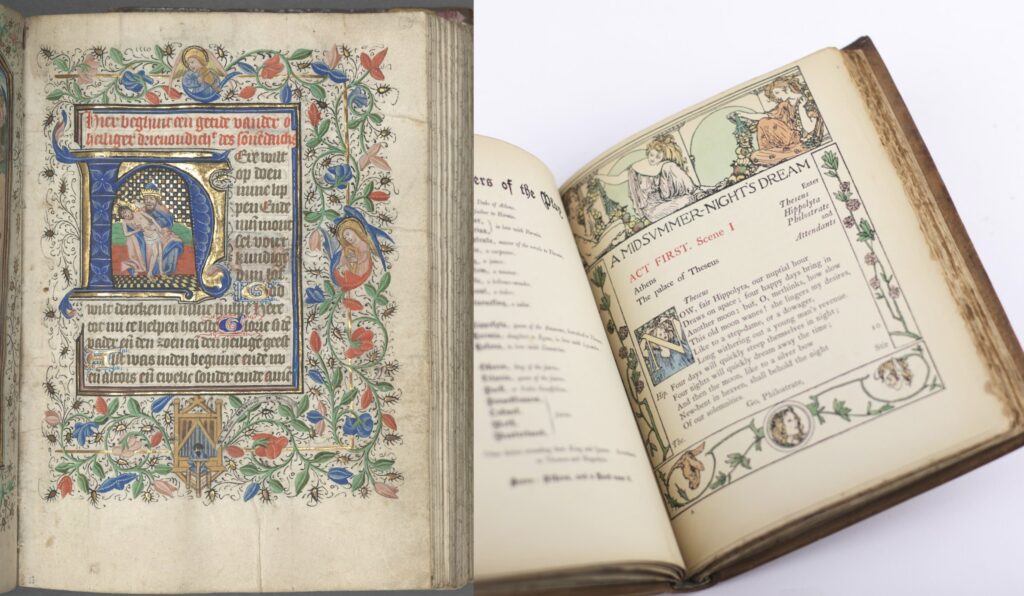
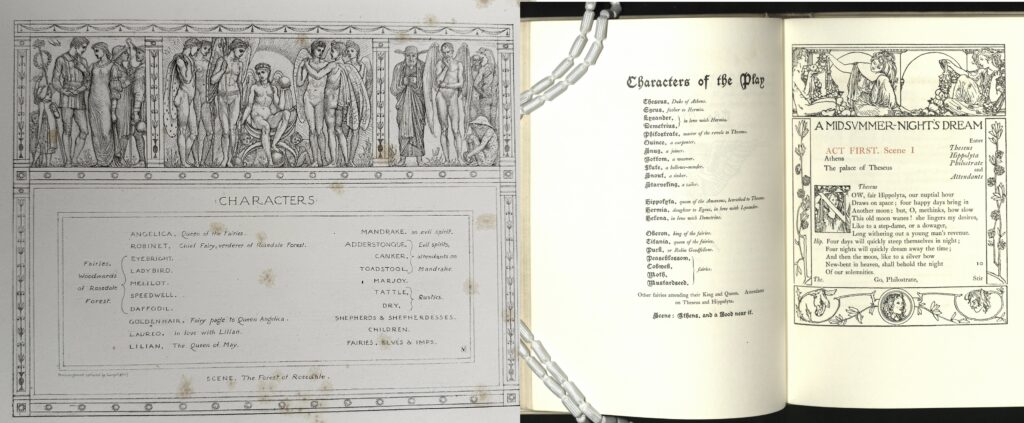
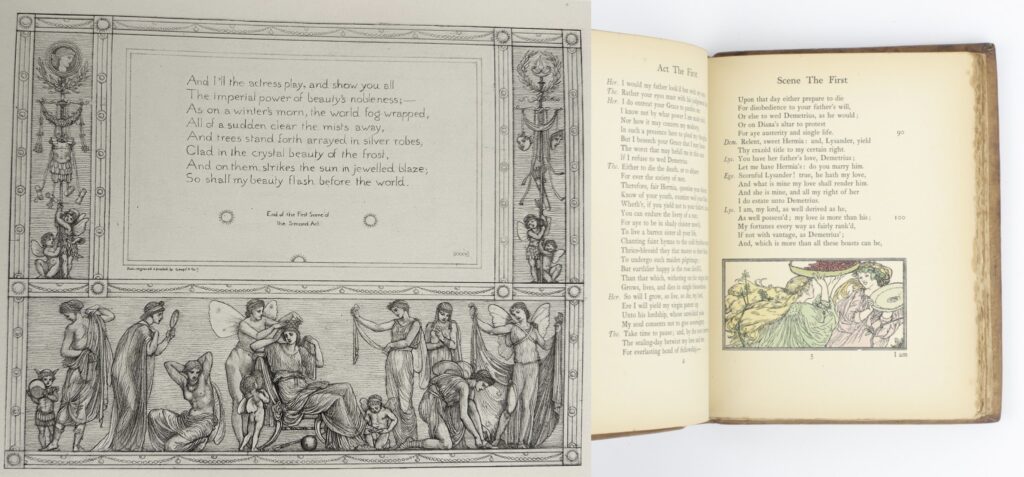
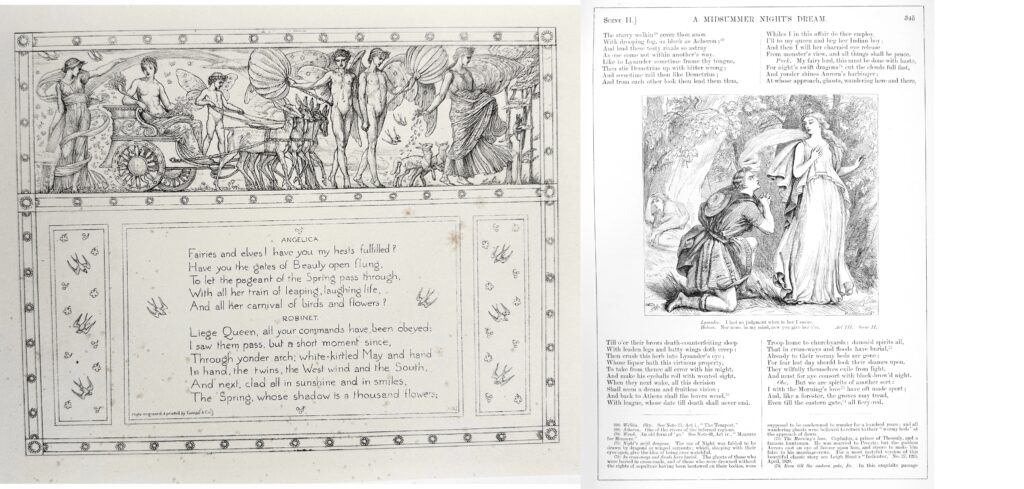
In my view, The First of May works more like a toy theater than a book — or a medieval manuscript for that matter. Toy theaters were popular in the early 19th century and were intended to be used at home and performed for family members and guests. Sometimes they were even accompanied by live music. Judging by the large format and the landscape orientation of Wise and Crane’s book it’s easy to imagine how it would work the same way.
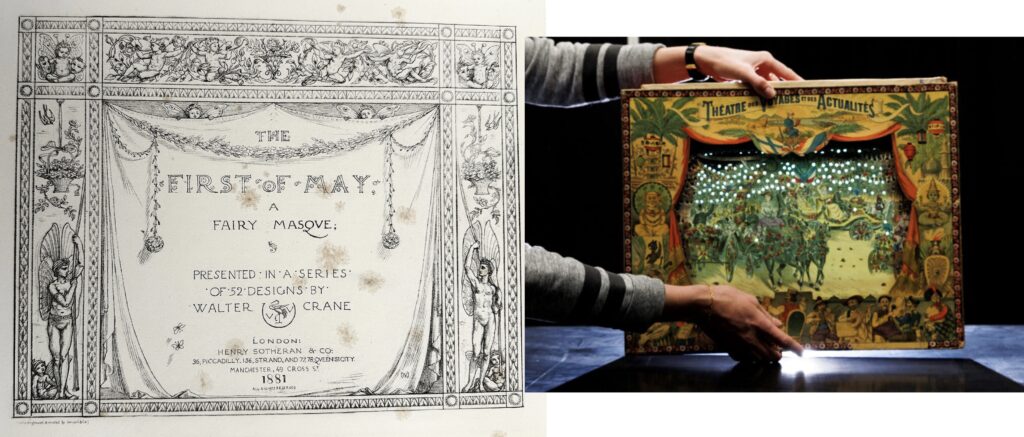
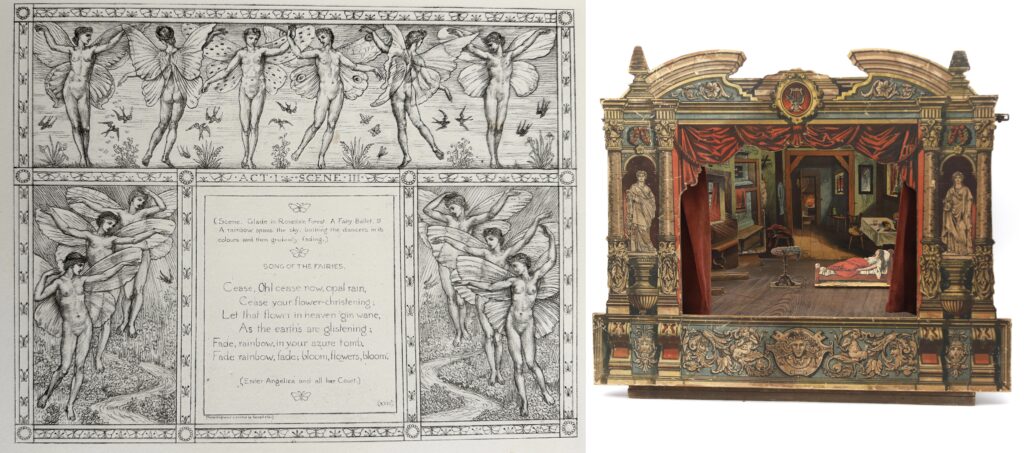
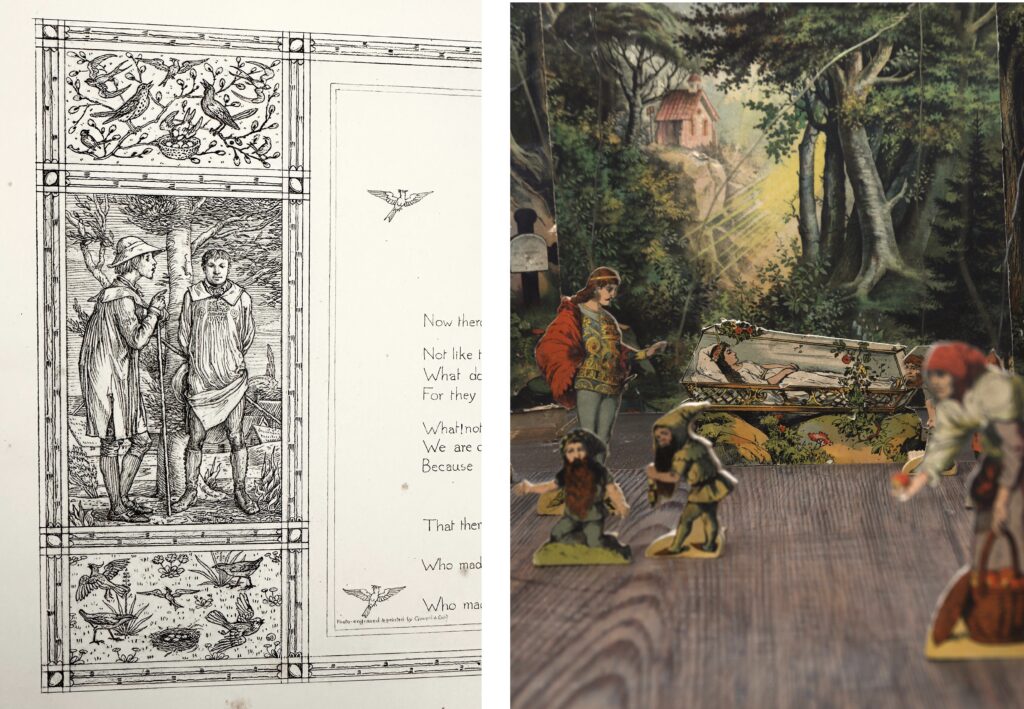
Perhaps Crane and Wise thought about evoking the fun and popularity of “Juvenile Dramas” (another name for the toy theaters) from decades earlier with the tradition of the book, it’s really hard to know why they publish a book like this one. According to the Dictionary of National Biography in John Wise’s entry, “A part of his … wealth he expended in the production of an elaborate volume called ‘The First of May: a fairy Masque,’ which he dedicated to Charles Darwin (1881, oblong folio). […] Wise’s name did not appear in the volume, which was financially unsuccessful.” Maybe something for the next post.
